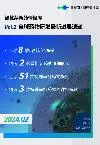Study supports extravascular ICD from Medtronic
2023-05-22
临床结果
The medtech giant designed its extravascular (EV) ICD system to treat dangerously fast heart rhythms that can lead to sudden cardiac arrest. Medtronic’s EV ICD pivotal study followed patients through an average of 17.1 months. The company presented data as late-breaking science at Heart Rhythm Society’s (HRS) 2023 meeting in New Orleans.
Medtronic’s first-of-its-kind implantable defibrillator aims to avoid certain risks of traditional, transvenous ICDs. It designed the system with a lead placed outside the heart and veins, under the sternum. Using a minimally invasive approach, the implant goes below the left armpit in the left mid-axillary region.
The ICD offers anti-tachycardia pacing (ATP) and pause prevention pacing. The device is similar in size, shape and battery longevity to transvenous ICDs, Medtronic said. Medtronic holds CE mark for the Aurora EV ICD and continues to work toward FDA authorization.
“The findings from the EV ICD pivotal study confirm that this system provides the advantages of a device with the lead outside the heart, and continues to provide pause prevention pacing and anti-tachycardia pacing to avoid shocks with prolonged follow-up,” said Dr. Paul Friedman, cardiac electrophysiologic, chair of the Department of Cardiology at Mayo Clinic and principal investigator of the Extravascular ICD pivotal study. “The EV ICD system is the first to include all of this functionality in a single extravascular device.”
Medtronic reports safety and effectiveness data
The study evaluated 299 implanted patients across the 17.1-month average. An estimated 6.8% of patients experienced the appropriate therapy by 18 months. Nineteen patients experienced 80 spontaneous, appropriately treated arrhythmic episodes.
Medtronic said that, of discrete episodes treated with shock, 21 of 21 were successfully terminated.
ATP successfully treated 35 of 52 episodes (67.3%). Patients avoided shocks in nearly half of all spontaneous episodes because of the availability of ATP, Medtronic said. Data built on the EV ICD’s previously reported defibrillation effectiveness results at implant (98.7%).
Medtronic observed a 91.9% rate of freedom from major EV ICD system- or procedure-related complications through 18 months. It observed the most common major complication, lead dislodgement (10 events in nine patients) at zero to 120 days post-implant. This predominantly relates to the lead-anchoring technique.
Inappropriate shocks occurred in 35 patients through all follow-ups, with a rate of 10.2% at one year. Medtronic previously reported exceeding its safety endpoint at six months.
The company also presented data leveraging EV ICD pivotal study device-detected episodes. This data demonstrated that the Medtronic proprietary algorithm designed to reduce inappropriate shocks successfully withheld inappropriate therapy caused by P-wave oversensing. It reduced inappropriate detection due to P-wave oversensing by 57%.
A real-world ICD benefit analysis
Dr. Anne Curtis also presented findings from a new analysis of commercially available ICD devices. Curtis serves as SUNY Distinguished Professor, Department of Medicine, Jacobs School of Medicine & Biomedical Sciences, University at Buffalo.
“Within the medical community, referral for ICD therapy is being delayed in light of newer classes of heart failure medications, but this study shows that patients do receive needed therapy from their ICDs,” said Curtis. “This study gives physicians a contemporary view into the real-world impact of ICDs nationwide, underscoring the importance of indicated patients receiving these potentially life-saving devices.”
The analysis demonstrated that 45% of ICD patients receive appropriate therapy for ventricular tachyarrhythmias through seven years. It included real-world, de-identified data from the Medtronic CareLink network from 2013 to 2022. The analysis assessed time-to-first therapy in a contemporary cohort of ICD patients.
First-time ICD recipients (225,444 patients, of which 179,638 were primary prevention) implanted with Medtronic Evera or Visia single- or dual-chamber ICD were included. The study assessed time-to-first shock, ATP therapy, and any therapy (shock or ATP) for all patients.
At seven years post-implant, the incidence of any appropriate therapy for all patients came in at 45%. It registered at 23% for primary prevention patients.
“The expansive data on Medtronic ICDs presented at Heart Rhythm 2023 reinforce the impact these therapies have for patients at risk of life-threatening heart rhythms,” said Dr. Alan Cheng, chief medical officer of the Cardiac Rhythm Management business at Medtronic. “Collectively, these findings demonstrate our unparalleled commitment to providing innovative solutions that improve patient experiences and outcomes even as medical care advances.”
更多内容,请访问原始网站
文中所述内容并不反映新药情报库及其所属公司任何意见及观点,如有版权侵扰或错误之处,请及时联系我们,我们会在24小时内配合处理。
靶点
-药物
-立即开始免费试用!
智慧芽新药情报库是智慧芽专为生命科学人士构建的基于AI的创新药情报平台,助您全方位提升您的研发与决策效率。
立即开始数据试用!
智慧芽新药库数据也通过智慧芽数据服务平台,以API或者数据包形式对外开放,助您更加充分利用智慧芽新药情报信息。





